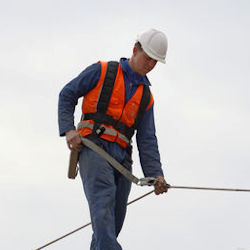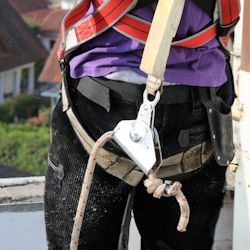Some Do's and Don'ts
Do's
- Read and follow manufacturer instructions for assembly, use, and care of fall arrest system components.
- After a fall, immediately remove the system from service. Also, have a competent person inspect the anchorage points of the system involved in the fall.
- Inspect fall arrest equipment (as well as all PPE) before and after use.
- When inspecting, consider possible environmental hazards (e.g., heat, chemicals, corrosive environments, high voltage power lines, moving machinery, sharp edges, etc.).
- Check the sag angle of a horizontal lifeline to estimate arrest forces on the anchorages.
- Think about the potential for a swing fall whenever you connect a lifeline to a personal fall-arrest system.
- Check your fall distance by considering lanyard length (before the shock absorber extends), deceleration distance (shock-absorber extension), worker height, and a safety margin (allow 3 feet).
Don'ts
- Don't wear a loose-fitting harness. Make sure it properly tightened.
- Don't tie knots in rope lanyards and lifelines; knots can reduce strength by 50%.
- Don't use a fall arrest system until you have been properly trained in its use, care, and limitations by a competent person.
- Don't use a fall arrest system unless you have developed a rescue plan. The longer you hang in the air, the more serious will be our injuries.
- Don't tie lifelines or lanyards directly to I-beams; the cutting action of beam edges can reduce the rope's strength by 70%.
- Never attempt to use makeshift components that have not been specifically designed for fall arrest applications.
Knowledge Check Choose the best answer for the question.
5-10. Why shouldn't you tie knots in rope lanyards or lifelines?
You forgot to answer the question!


